The secret to photography is backlit in the bright sunny days
About the author: The article is translated from sharing by Karthika Gupta - a professional wedding photographer and photo editor currently living in Chicago.
One of the most important elements of photography is light. So it is very important for photographers to understand the types of lighting as well as how to adjust the light when shooting each shot. It is not easy to know exactly the intensity, direction and quality of each photo frame.
When photographing outdoors or wanting a photo with natural brightness, sunlight in the early morning (when the Sun is low at the horizon and soft light - Soft Light) or at the setting of the Sun is ideal. However, it's not always easy for photographers because customers are often afraid of taking photos at dusk and early morning. Especially in the case of wedding photography, many wedding ceremonies are held outdoors, at noon with harsh sunshine and the photographer cannot completely change this decision of the customer. Now, what you can do is learn about the tricks to take beautiful photos when the environment has too much light and in this article, I will guide you.
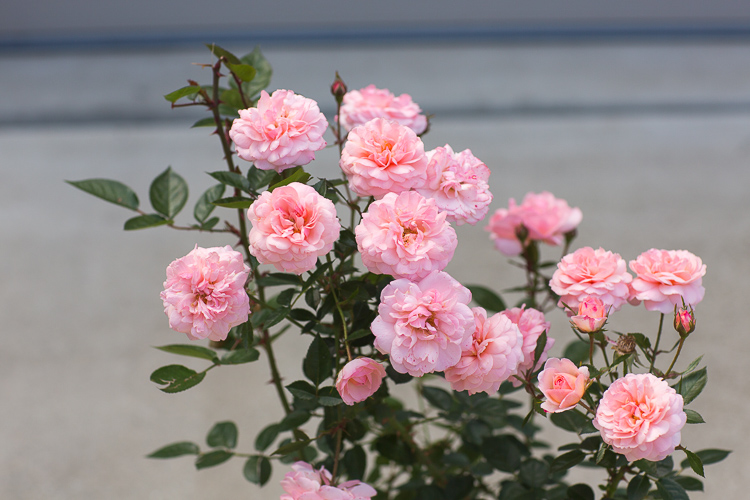
Karthika Gupta's rose flower pots were taken at noon (using a shading tool)
Note: Most of the images used in this article are very "SOOC" (traight out of camera). I didn't edit it so you could honestly see the image taken in extreme light conditions.
1. Place the subject's back facing the sun
If there is no shadow, your only option is to place the subject completely in the light area and the easiest tip is to have the subject turn to the Sun. This will help prevent nearly all beams from shining directly on the subject, preventing them from squinting when there is direct light, while making the subject in the picture become underexposed and becoming a floating black shape turn on the frame. This technique is called backlit photography.
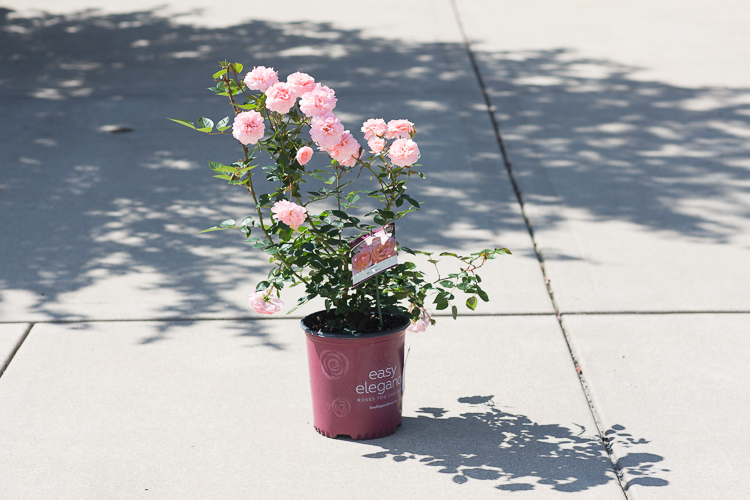
Rose pots are taken in the middle of the sun, when the Sun rises to the zenith
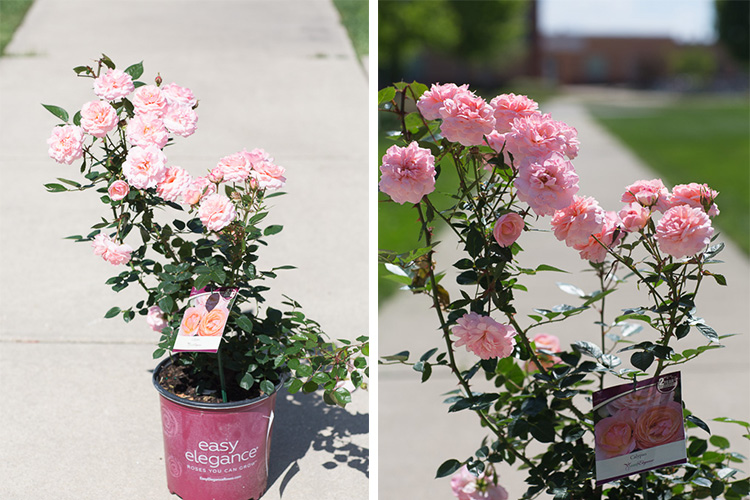
The flower pot on the left is taken in bright sunlight and the flower pot on the right is taken in a backlit fashion

Use a light-emitting plate to highlight the flowers
The ideal time to take photos back in the morning is the early morning when the sun rises or the late afternoon before sunset - when it is still bright but not too harsh. Normally, in the summer, you should start taking photos before 7am and afternoon from 4:30 - 6:30. In winter, this time may vary slightly, but the "golden" time frame for all types of images is related to sunlight, always early in the morning and at sunset.
A beautiful backlit photograph should also have a good composition. The harmonious combination between the subject and the background makes your work more interesting and attractive. The photographer can take advantage of surrounding objects such as window frames, domes or a canopy so that the picture becomes lively and close.
2. Self-shade creation
If you want to maintain details on the background, sky or want the subject's face to be brighter, let the subject stand behind a tree (behind the tree is sunlight), use a good mirror lighted up. In difficult cases, you can take advantage of the flash as an effective light compensation tool, however, the level of perfection is not equal to other tools.
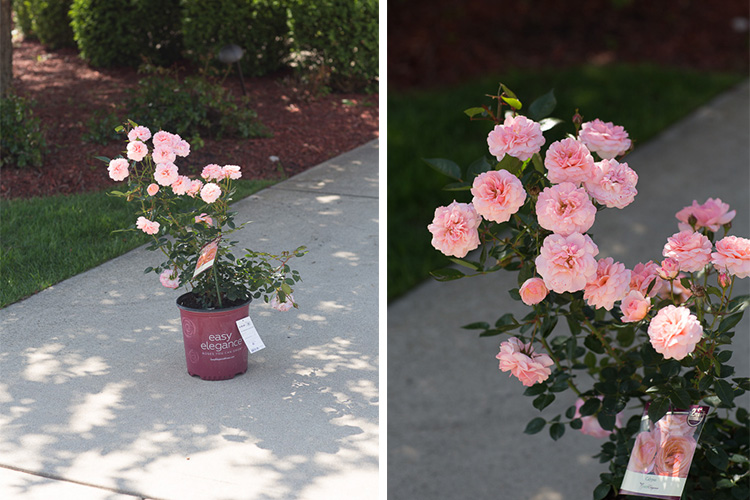
The flower pot on the left is placed under a tree, the flower pot on the right is an example of light spots speckled on petals.Note that there are some cotton in the shade, and some are still illuminated by the sun.
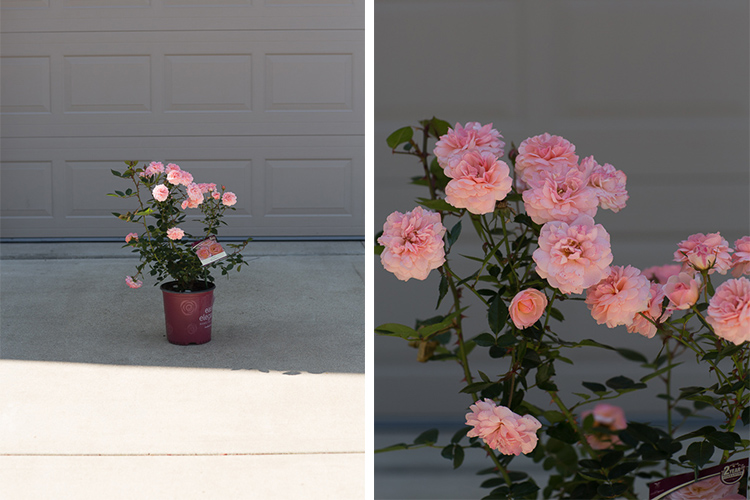
Flower pots are placed in the sunlit place

Use a waterproof panel to reflect a little light on the flower pot
3. Use light-emitting device
If all else fails and you have no choice but to place your subject in the hot sun, use a radiator.
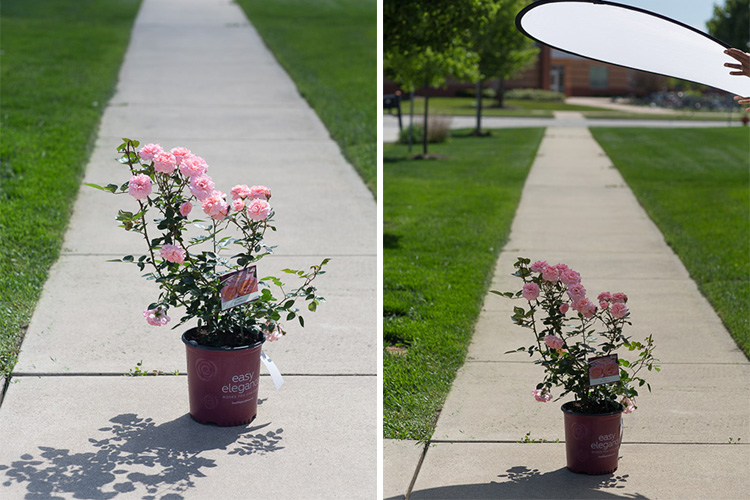
Use a radiator

The light was scattered around, making the flowers more beautiful
The light-emitting device will cause the light to be evenly distributed across your subject, possibly a white opaque cloth or a specialized device.
4. Some other useful ways
- In case you cannot move the subject, you can change the shooting angle such as top-down shooting or bottom-up shooting.This method helps to adjust the angle of the sun to the subject and angle of the camera, creating a special effect for the photo.
- You can use the Polar filter (or Neutral Density instead) to reduce light reflection, making the amount of light entering the machine less, helping a slower shutter speed and smaller aperture.In addition, Polar filters also allow you to better control some colors, especially when you have a blue sky in the frame.
- In strong light conditions, metering can become more difficult.At this point, you can choose Spot Metering mode on a DSLR camera and select the main subject of the scene as the focus point when measuring light.Also, choose a neutral area to measure if you want everything to have good light.If you have a lot of time, take lots of photos that light up different parts of the scene and choose the best picture afterwards.
You should read it
- Don't miss the 15 basics for better shooting and video recording
- 5 types of photos ideal for those who like to travel
- 6 focus features that you've never used
- Why are photos blurred and how to fix them when taking photos!
- Turn on the secret of long exposures in photography
- 5 'very toxic' tips help improve photography skills in just 1 minute
- What is green time in photography? Is it different from Golden Time?
- 'Beginner lessons' take landscape photos for new ghosts
May be interested
- Take a picture of the Cinematic Photography style
 cinematic photography is an entirely new type of cinematic photography. the photographer will do the color effect as well as adjust the aspect ratio to resemble the image taken from a movie.
cinematic photography is an entirely new type of cinematic photography. the photographer will do the color effect as well as adjust the aspect ratio to resemble the image taken from a movie. - Instructions for taking photos with flash
 if the photos you take with your dslr and the removable flash are often too bright, too dark, or bright, dark, you need to understand more about the flash and the basic techniques to control it, making it a good shot than.
if the photos you take with your dslr and the removable flash are often too bright, too dark, or bright, dark, you need to understand more about the flash and the basic techniques to control it, making it a good shot than. - Photographic tips that cast shadows in photography
 photographing shading becomes one of the photography topics chosen by many photographers. the drop shadow is completely different from the original image. depending on the shooting techniques and artistic look of each person, different products are produced.
photographing shading becomes one of the photography topics chosen by many photographers. the drop shadow is completely different from the original image. depending on the shooting techniques and artistic look of each person, different products are produced. - Should the TV screen be too bright?
 many users of us often have a habit of leaving the tv screen too bright because the higher the brightness, the more beautiful the image will be. so is this really true and should we leave the tv screen too bright?
many users of us often have a habit of leaving the tv screen too bright because the higher the brightness, the more beautiful the image will be. so is this really true and should we leave the tv screen too bright? - Formula to adjust standard, beautiful backlit photos on iPhone
 to have beautiful and attractive photos to post on social networks is very simple? below is a standard, beautiful backlit photo editing formula on iphone that cannot be missed.
to have beautiful and attractive photos to post on social networks is very simple? below is a standard, beautiful backlit photo editing formula on iphone that cannot be missed. - Glowing pink owl wings may be sending secret messages
 under certain lighting conditions, scientists have found that the long-eared owl's dappled woodland camouflage is revealed by its bright, fluorescent pink wing feathers.
under certain lighting conditions, scientists have found that the long-eared owl's dappled woodland camouflage is revealed by its bright, fluorescent pink wing feathers. - Reasons why you should not use your laptop outdoors on sunny days
 if you plan to park your car in the park and use your laptop to work, you first need to know how sunlight can affect your computer.
if you plan to park your car in the park and use your laptop to work, you first need to know how sunlight can affect your computer. - 15 simple photography tips that help amateurs also become a professional photographer
 you are passionate about photography, but not economical enough to invest in professional photography equipment. so how to create beautiful pictures?
you are passionate about photography, but not economical enough to invest in professional photography equipment. so how to create beautiful pictures? - 5 most popular photography trends you need to know
 if you are a professional photographer, a creator who likes to learn about photography art or a designer who often uses copyrighted images in creative products, do not ignore this article.
if you are a professional photographer, a creator who likes to learn about photography art or a designer who often uses copyrighted images in creative products, do not ignore this article. - The mystery of the century 'bright night like day' has been decoded
 bright nights such as day or white nights are the phenomenon of sky at night even without moonlight but still so bright that people can read books. the mystery of riddling scientists throughout this century has finally been deciphered.
bright nights such as day or white nights are the phenomenon of sky at night even without moonlight but still so bright that people can read books. the mystery of riddling scientists throughout this century has finally been deciphered.










 How to choose an effective old lens that you should not miss
How to choose an effective old lens that you should not miss 5 types of photos ideal for those who like to travel
5 types of photos ideal for those who like to travel Should photographed RAW mode or not?
Should photographed RAW mode or not? 'Beginner lessons' take landscape photos for new ghosts
'Beginner lessons' take landscape photos for new ghosts When should not use auto focus mode to take photos?
When should not use auto focus mode to take photos?